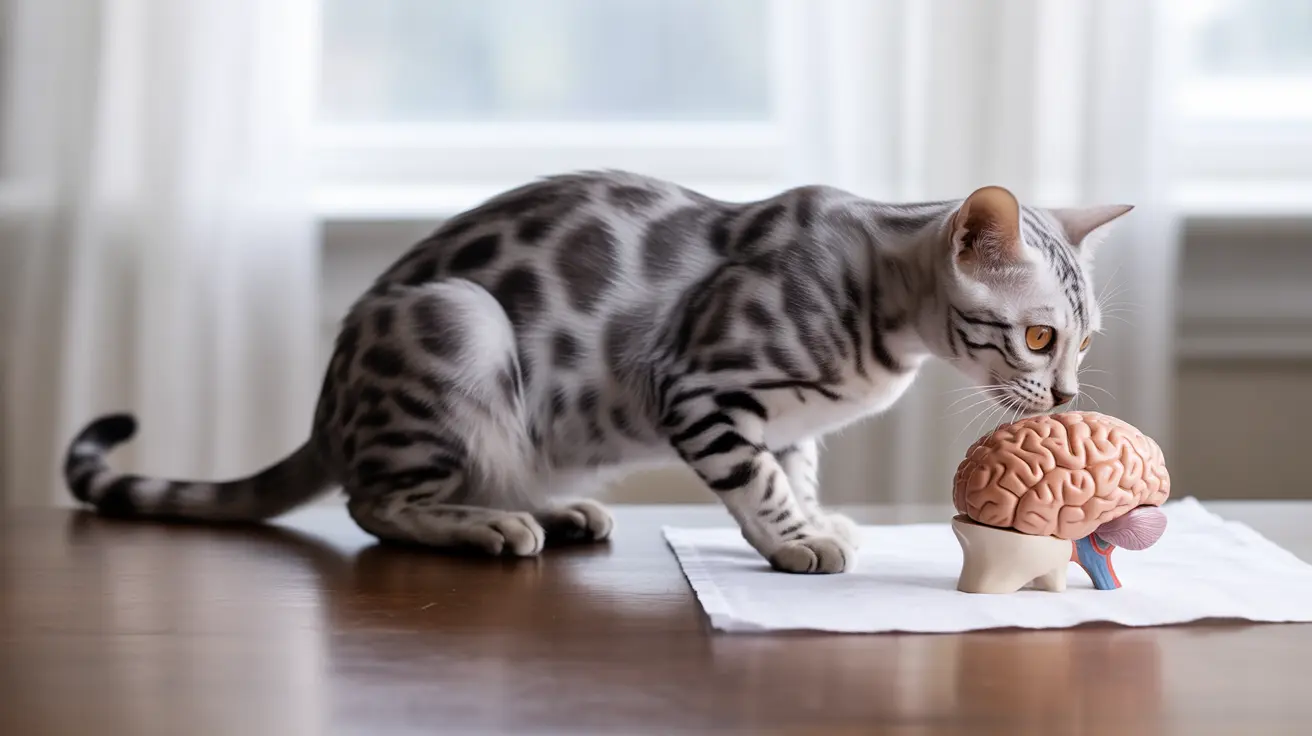Ever wondered about the size and capability of your feline friend's brain? A cat's brain is a fascinating organ that, despite its modest size, enables incredible feats of agility, memory, and problem-solving. Let's explore the remarkable characteristics of the feline brain and understand what makes it so special.
While surprisingly compact, measuring about 2 inches in length and weighing just 25-30 grams (roughly the size of a walnut), a cat's brain is a marvel of evolutionary engineering. This sophisticated organ makes up approximately 1% of a cat's total body weight and contains an impressive network of neural pathways that control everything from hunting instincts to emotional bonds.
The Physical Dimensions of a Cat's Brain
The domestic cat's brain is remarkably compact yet efficient. At roughly 2 inches (5 cm) in length, it's comparable to a large walnut in size. The brain weighs between 25 and 30 grams, which is particularly interesting when you consider that this represents about 1% of an average adult cat's body weight.
For perspective, this is proportionally smaller than a human brain, which typically accounts for 2.3% of body weight. It's also smaller than a dog's brain, which is closer to the size of a tangerine. However, size isn't everything when it comes to brain function and capability.
Structure and Functionality
The cat brain features three main regions, each with specialized functions:
The Cerebrum
This largest portion of the brain handles conscious thought, problem-solving, memory, and emotional processing. The cerebral cortex contains approximately 300 million neurons, giving cats their remarkable cognitive abilities.
The Cerebellum
This region coordinates movement and balance, contributing to cats' legendary agility and grace. It's particularly well-developed in cats compared to many other mammals.
The Brainstem
This vital area controls basic life functions such as breathing, heart rate, and consciousness. It's essential for survival and maintains crucial bodily functions.
Impact of Domestication on Brain Size
Interestingly, domestic cats have slightly smaller brains than their wild ancestors. This reduction in size is a common effect of domestication, seen across various species. However, this hasn't significantly impacted their intelligence or capabilities.
Studies show that while brain size has decreased through domestication, cats have maintained their problem-solving abilities and even developed enhanced social skills for interacting with humans.
Intelligence Despite Size
Despite their relatively small brain size, cats demonstrate remarkable intelligence in several ways:
- Complex problem-solving abilities
- Excellent spatial awareness and memory
- Strong emotional intelligence and bonding capacity
- Advanced hunting and survival instincts
- Remarkable adaptability to new environments
Frequently Asked Questions
How big is the brain of an average domestic cat compared to its body size?
The average cat's brain makes up approximately 1% of its total body weight, weighing between 25-30 grams and measuring about 2 inches in length.
Why are domestic cats' brains smaller than those of their wild ancestors?
This reduction in brain size is a common effect of domestication, as cats evolved to depend more on human care and less on survival instincts. However, this hasn't compromised their intelligence or capabilities.
How does a cat's brain structure compare to a human's brain?
Cat brains share about 90% structural similarity with human brains, featuring similar lobes and regions. However, cats lack specific language-processing areas found in human brains.
Does brain size reduction from domestication affect a cat's intelligence or behavior?
While domestication has led to smaller brain size, it hasn't significantly impacted cats' intelligence. Instead, it has resulted in enhanced social abilities and adaptability to living with humans.
What are the main functions of the different regions in a cat's brain?
The cerebrum handles conscious thought and memory, the cerebellum coordinates movement and balance, and the brainstem controls essential life functions like breathing and heart rate.
Understanding the size and complexity of a cat's brain helps us appreciate these remarkable animals even more. While their brains may be small, they're perfectly engineered for their needs, allowing cats to be the intelligent, agile, and loving companions we know them to be.






